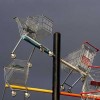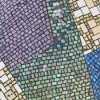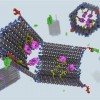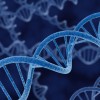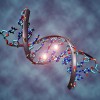Future Nobel Prize-winning cancer researchers?
What did you do for your science fair this year? Or last year? Or 20 years ago?
Recently three high school students took out top honors in science fairs for their projects involving cancer research:
- Angela Zhang from California developed nanotechnology to destroy cancer stem cells and win the 2011 Siemens Competition in Math, Science & Technology;
- Shree Bose from Texas discovered a protein that could help prevent resistance to chemotherapy to take out first prize in the first International Google Science Fair; and
- Michigan native Nithin Tumma won the 2012 Intel Science Talent Search with his investigation of molecular pathways to compare breast cancer treatments.
The budding researchers walked away with a combined $250,000 in prize money for their efforts!
Angela used nanotechnology in a three-pronged approach to eradicating cancer stem cells, similar to my recent post on using DNA nano-robots to deliver cancer drugs to tumor cells. Not only did Angela design a nanoparticle to find the stem cells, and deliver the drug straight to the cells, but she used gold and iron molecules in the nanoparticle to allow non-invasive imaging via MRI and photoacoustic methods. Any one of these discoveries was worthy of an advanced level science fair project, let alone combining all three. As she told ABC News, “I created a nanoparticle that’s kind of like the Swiss Army knife of cancer treatment in that it can detect cancer cells, eradicate the cancer cells and then monitor the treatment response. So the major aim of the project was to personalize cancer medicine.”
Shree investigated how cancer cells become resistant to chemotherapy. Using ovarian cancer cell cultures, she found that the protein adenosine monophosphate-activated protein kinase (AMPK) modulated resistance to the drug cisplatin at different times during treatment. If AMPK was combined with cisplatin early in treatment, it reduced the drug’s effectiveness, but if added later during treatment, it helped maintain effectiveness; in effect, reducing resistance. Shree realized the importance of her work, commenting, “That opens up a lot of new avenues for research.”
Nithin’s project looked at the protein cytokine TGF-A involved in cell signaling, one of the key concepts in the Pathways to Cancer. As I wrote in a past post, we can use the analogy of a car to think about cancer cell growth: tumor cell overgrowth is like pressing down on the accelerator; apoptosis is like applying the brakes. Nithin used computational biology techniques (bioinformatics) to research how to inhibit TGF-A to slow cancer cell growth and decrease malignancy.
Science fairs have been running almost as long as we’ve been teaching science, and giving aspiring scientists an opportunity to shine. Alumni of the Intel competition alone have gone on to win seven Nobel Prizes, two Fields Medals, three National Medals of Science and 11 MacArthur Foundation Fellowships!
So what’s your next science fair project going to be about?
You can find out more about cancer treatments and cell signalling pathways at www.insidecancer.org.
| Print article | This entry was posted by Amy Nisselle on March 19, 2012 at 11:24 am, and is filed under Inside Cancer. Follow any responses to this post through RSS 2.0. You can leave a response or trackback from your own site. |

